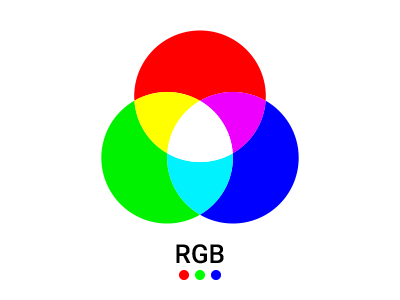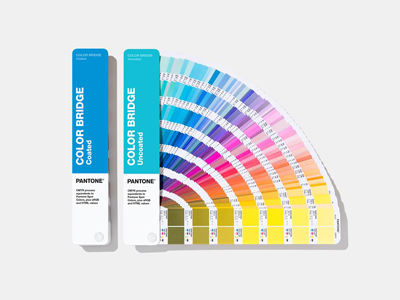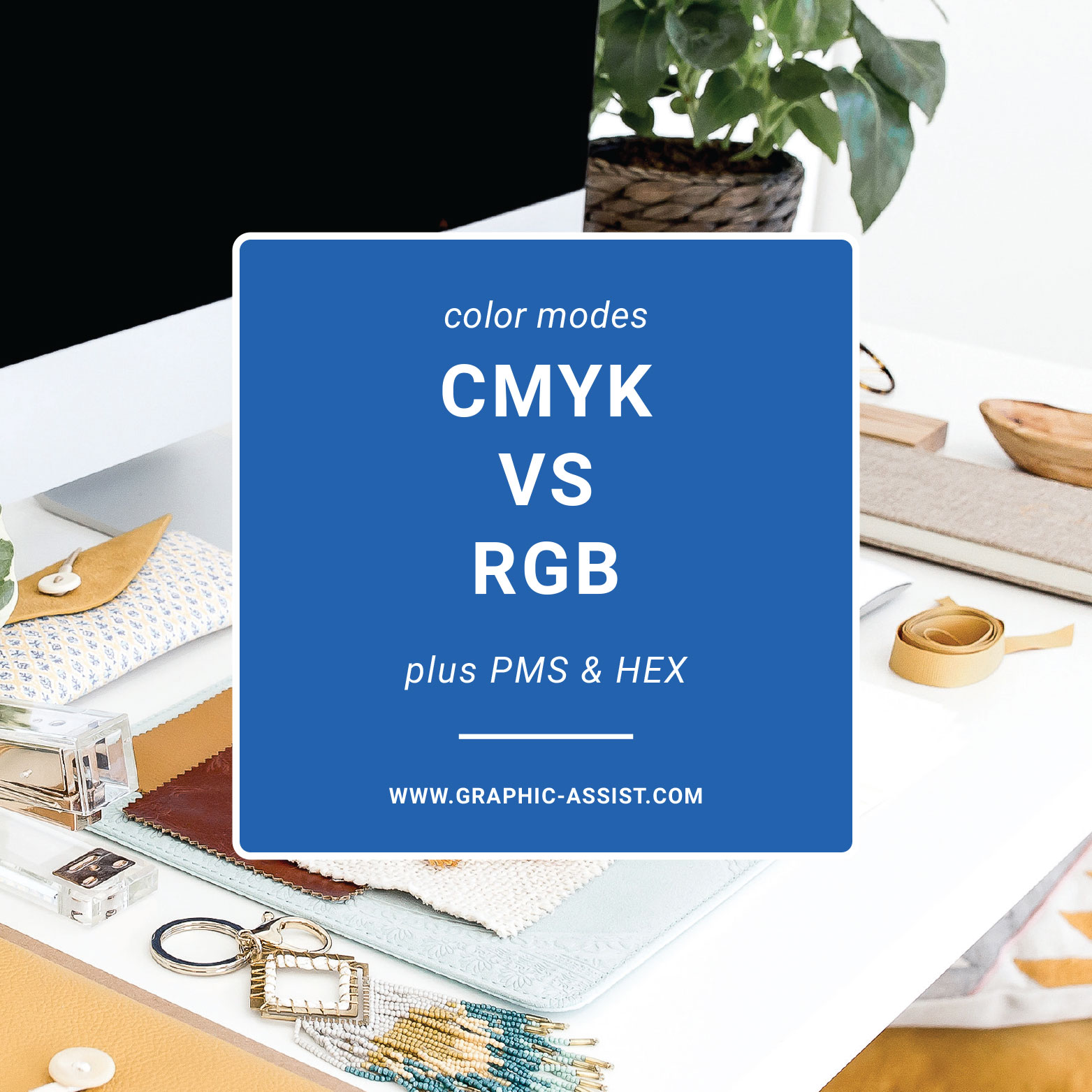Color Modes: CMYK vs RGB (plus PMS & HEX): What’s the difference?
Whether you’re a designer or a client receiving a design, it’s important to know the difference between CMYK and RGB color modes to optimize your graphics. Depending on where and how you will share your graphic, one color space is better than the other.
I’ll share with you what CMYK and RGB are, how they work, and when it’s best to use each. While the acronyms look confusing, it’s actually quite simple when you realize the letters correlate with the color they represent.
What is the difference between CMYK and RGB?
Both CMYK and RGB are modes for mixing color in graphic design. CMYK is best used for printed products while RGB is used for digital products. Let’s dive deeper.

What is CMYK?
CMYK (Cyan, Magenta, Yellow, Black) is the color space used for printed materials. A printer creates images by combining CMYK with physical ink. This is known as subtractive printing because all colors start as white. Each layer of ink reduces the initial brightness to create a preferred color. When all colors are mixed together, they create pure black.
When to Use CMYK?
Use CMYK for any design that will be physically printed, not viewed on a screen. This includes projects like business cards, flyers, brochures, t-shirts, and packaging.

What is RGB?
RGB (Red, Green, Blue) is the color mode used for digital images. RGB should be used if your design will be viewed on-screen. Imagine your computer. A light source within the monitor creates color by mixing red, green, and blue light. This is known as additive mixing, all colors begin as black, and then red, green, and blue are added on top of each other to create the perfect color. When red, green, and blue are mixed together at equal intensity, they create pure white.
Designers can control aspects like saturation, vibrancy, and shading by modifying any of the original three colors. Because it’s done digitally, the designer manipulates how the light on the screen looks to create the color they want.
When to Use RGB?
If the end project will be viewed on a digital screen like a computer, tablet, or phone, use RGB color mode. This would include graphics for your website, social media, or online ads.
When I work with clients, I often give the PMS and HEX codes in addition to the CMYK and RGB color values.

What is PMS?
PMS (Pantone Matching System) was created in the 1960s by a print company. The company wanted to systemize and simplify the company’s stock of pigments and production of colored inks by naming specific colors with numbers. Today, PMS allows designers and printers to match specific colors regardless of the location or equipment a design printed on.
When to use PMS?
Use PMS colors when you are printing a product that needs to be a specific color. Typically designers will specify one or two colors per design as it is an additional cost. Keep in mind that PMS numbers are typically followed by the letter C or U which stands for Coated or UnCoated paper. Ask your designer or printer for help if the colors of your printed products don’t look like you want them too.
What is HEX?
Hex is a six-digit number preceded by the number sign (#). Hex codes are an expanded form of RGB and are used primarily by web designers to create consistent brand colors on websites. Programs like Canva, Google Docs, and Microsoft Powerpoint allow clients to input hex codes which is one reason I like to include the corresponding hex code so that clients can be consistent when using their brand colors.
Keep in mind where your design or graphic will be viewed and select the correct color mode (CMYK or RGB). This will ensure the colors will look appropriate for the final output. If you need help with your brand colors, please reach out.


